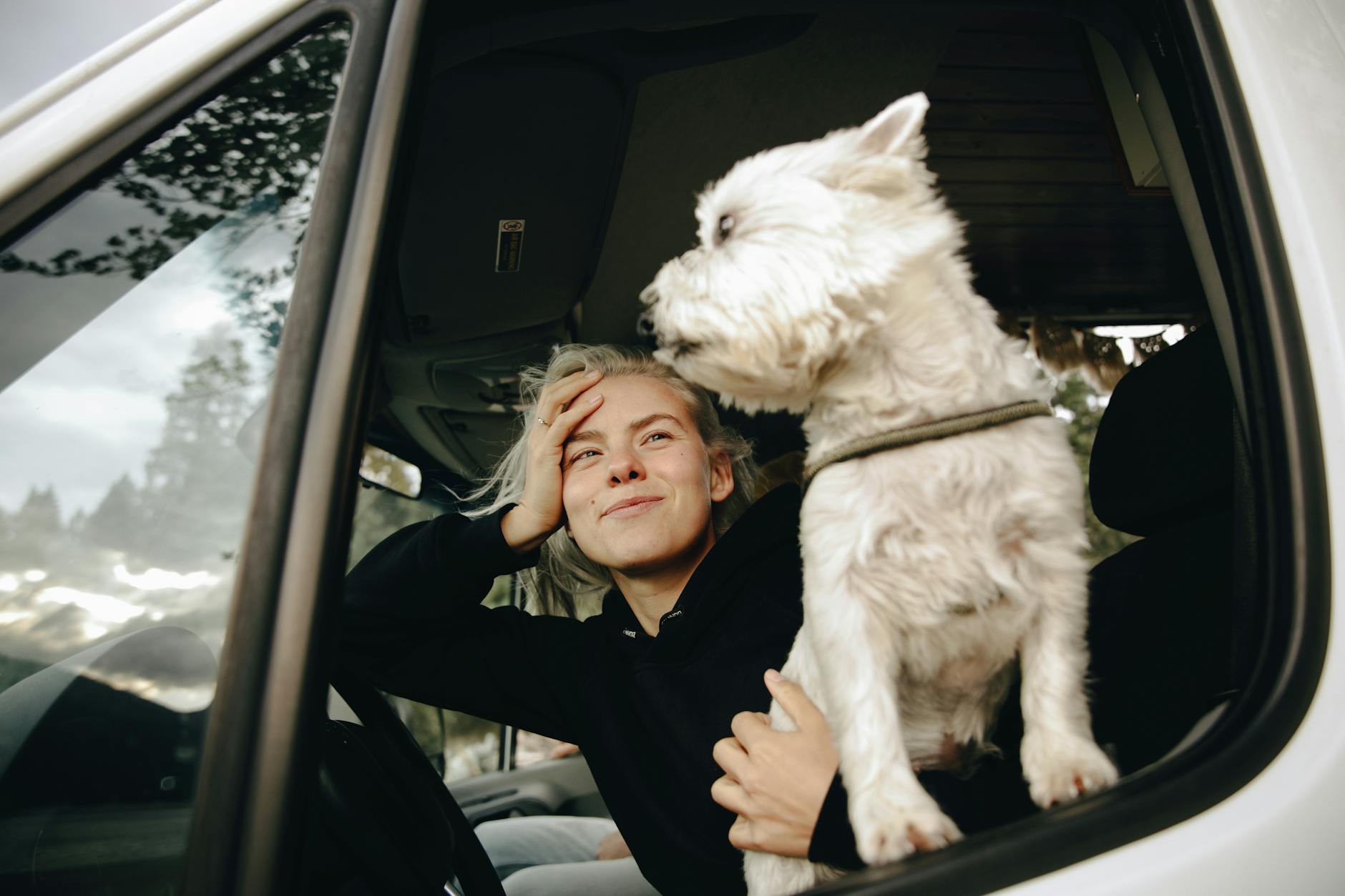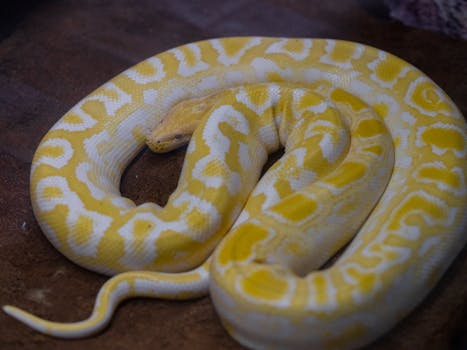The Ultimate Guide to Traveling with Pets: Tips, Tricks, and Tail-Wagging Adventures
Ever tried packing for a vacation and found your furry friend giving you that irresistible, "Can I come too?" look? You're not alone! With more pet owners hitting the road with their pets than ever before, traveling with pets has become a fun, adventurous trend. Whether you’re planning a road trip or a flight, this guide has all the tips and tricks for a smooth journey with your four-legged pal. From packing essentials to finding pet-friendly accommodations, we've got you covered. Let’s dive into the world of tail-wagging adventures and make your next trip a pawsitive experience!
Traveling by Car with Pets
When you're hitting the open road with your furry friend, it's important to ensure that the journey is not only fun but also safe and comfortable for your pet. Here are some tips to help you and your pet enjoy your car trips together!
Car Safety for Pets
Ensuring that your pet stays safe during a car ride is crucial. Just like humans, pets need to be secured to prevent injuries in case of sudden stops or accidents. There are several ways to keep your furry friend safe:
- Pet Seat Belts: These are specially designed harnesses that attach to your car's seat belt system. They help keep your pet secure and prevent them from wandering around the vehicle.
- Harnesses: Harnesses can provide a snug fit around your pet's body and can be clipped to the car seat belt. This prevents pets from moving too much and keeps them safe in one spot.
- Crates: Placing your pet in a crate that is securely fastened in the car can be a good option, especially for smaller pets. It provides a confined space that can help them feel secure and protected. Make sure the crate is well-ventilated and large enough for your pet to stand, turn around, and lie down comfortably.
 Photo by PNW Production
Photo by PNW Production
Comfortable Rides
A comfortable pet is a happy pet! Long car rides can be stressful for pets, but there are ways to make the journey smoother:
- Frequent Breaks: Stop regularly to allow your pet to stretch their legs, go to the bathroom, and have a little water. Aim for breaks every 2-3 hours.
- Familiar Bedding: Bring along your pet's favorite blanket or bed. Familiar smells can help reduce anxiety and make them feel more at home.
- Keep the Car Cool: Make sure the car is well-ventilated. Use sunshades on the windows and keep the air conditioning on during hot days. Never leave your pet in a parked car, especially on warm days, as temperatures can rise quickly and become dangerous.
Preventing Motion Sickness
Motion sickness can turn a fun trip into a miserable one for your pet. Here are some tips to help manage and prevent it:
- Control Food Intake: Avoid feeding your pet a large meal right before the trip. An empty stomach can help reduce the chances of nausea. Provide small amounts of water instead.
- Comfort and Calming: Use calming sprays or pheromone diffusers that can help soothe your pet's nerves. Sometimes, a favorite toy can also serve as a distraction.
- Steady the Ride: Drive smoothly and avoid sudden stops or sharp turns. Keeping your pet facing forward can help reduce motion sickness, as it minimizes conflicting signals to their brain.
By following these tips, you can help ensure that your pet's car ride is safe, comfortable, and enjoyable. Stay tuned for more tips on traveling with your pets in our next section!
Accommodation Tips for Traveling with Pets
Finding the perfect place to stay with your furry friend is essential for a stress-free trip. From choosing the right lodging to setting up a cozy spot for your pet, these tips will make your stay enjoyable and comfortable.
Choosing Pet-Friendly Lodging
Picking the right place to stay with your pet involves more than just a "pets allowed" sign. Here are some key factors to consider:
- Pet Policies: Look for accommodations with clear pet policies. Some may have size or breed restrictions, while others could have limits on the number of pets allowed.
- Pet Fees: Check if there are additional charges for bringing your pet. Some places might include extra fees for cleaning or offer pet packages with amenities.
- Outdoor Spaces: Access to outdoor areas like parks, gardens, or walking paths can be a big plus. It's great for your pet to have a place to stretch their legs and do their business.
- In-Room Amenities: Consider what amenities are available in the room for your pet, such as pet beds, bowls, and treats. Some hotels even provide pet menus!
- Reviews and Recommendations: Read reviews from other pet owners who have stayed there. They can give you insights into how truly pet-friendly the place is.
 Photo by Andrea Piacquadio
Photo by Andrea Piacquadio
Making Your Stay Comfortable
Ensuring your pet feels at home in a new environment can make all the difference. Here are some tips to help:
- Set Up a Cozy Spot: Bring along your pet's favorite bedding, toys, and even a piece of clothing that smells like home. This can help them feel more secure and relaxed.
- Respect Hotel Policies: Follow the hotel's pet rules, such as keeping your pet on a leash in common areas and cleaning up after them immediately. This not only shows respect but also helps ensure that more hotels remain pet-friendly.
- Plan for Alone Time: If you need to leave your pet alone in the room, make sure it's allowed and keep it brief. Use a crate or playpen to prevent any unexpected messes or damage.
- Calm and Comfort: Bring calming sprays or pheromone diffusers that can help soothe anxiety. A familiar environment, even in a strange place, can be very reassuring for your pet.
- Dealing with Potential Issues: Be prepared for any problems that might arise, like extra noise or unexpected visitors, by having a plan to keep your pet calm. A well-stocked pet first-aid kit can also be handy for minor injuries or issues.
By carefully choosing the right accommodation and making your pet comfortable, you can ensure a pleasant stay for both you and your furry companion. Keep exploring for more tips on making your travels with pets smooth and enjoyable.
Activities and Attractions for Pets
Traveling with your pet can be an amazing adventure filled with exciting activities and memorable experiences. There are plenty of places that welcome pets and offer fun-filled adventures. Here are some of the best activities and attractions for pets that you can enjoy together.
Outdoor Adventures
Exploring the great outdoors with your pet is a fantastic way to bond and get some exercise. Here are some pet-friendly outdoor activities you can enjoy:
 Photo by Pixabay
Photo by Pixabay
1. Hiking: Take your furry friend on a hike through scenic trails. National parks like Acadia National Park and many state parks have pet-friendly trails that offer beautiful views and fresh air. Always check the park regulations for any restrictions.
2. Beach Trips: What's more fun than a day at the beach with your pet? There are many dog-friendly beaches where your pet can run, swim, and play. Spots like Wildwood Dog Park and Beach or Haulover Beach Park are great for a day of sun and surf.
3. Dog Parks: Dog parks are fantastic places for your pet to socialize and play. Many cities have designated dog parks where your pet can run freely and make new friends. These parks often have agility courses and ample space for playtime.
Pet-Friendly Restaurants and Cafes
Finding places to dine with your pet can be easier than you think. These tips will help you enjoy meals with your furry companion:
1. Look for Pet-Friendly Spots: Many restaurants and cafes have outdoor seating areas where pets are welcome. Websites and apps like Bring Fido can help you find these spots. Look for places that provide water bowls and sometimes even pet menus.
2. Enjoy Al Fresco Dining: Outdoor patios are becoming popular dining options for pet owners. Enjoy a meal under the stars while your pet relaxes by your side. Some cafes even offer treats for pets, making them feel extra special.
3. Follow Etiquette: Ensure your pet is well-behaved and keep them on a leash. Not everyone is comfortable around animals, so it's important to be considerate of other diners. Clean up after your pet and follow the restaurant's rules.
Exploring these activities and attractions will make your trip enjoyable for both you and your pet. Whether you're hiking through picturesque trails, splashing in the waves, or dining at a cozy cafe, these experiences will create lasting memories for you and your furry friend. Stay tuned for more tips and tricks for traveling with pets!





